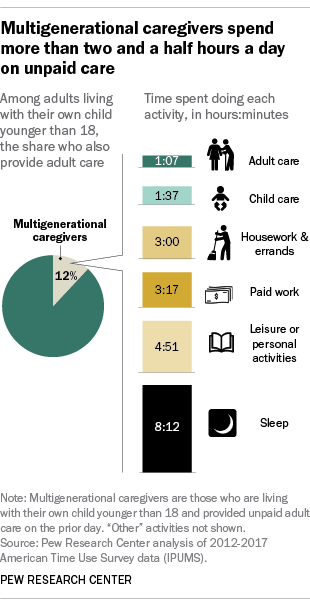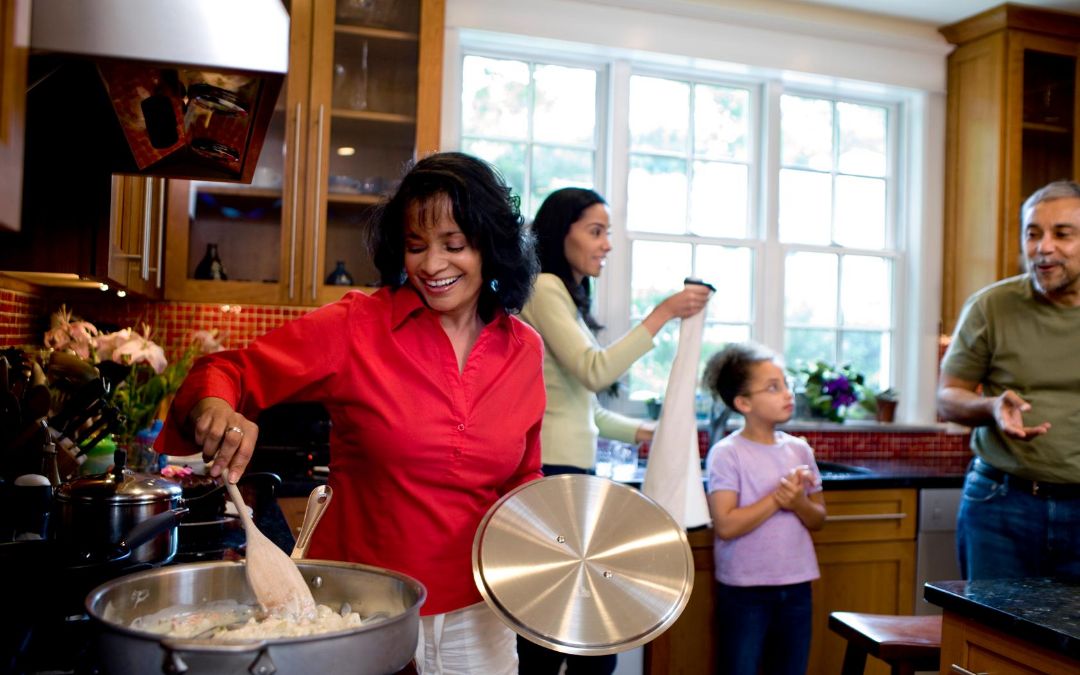Maybe you’ve never heard the term “sandwich generation,” or perhaps you’re currently a part of this unique group. No matter the case, read on to learn more about the sandwich generation and how to cope with its challenges.
What is the Sandwich Generation?
The term sandwich generation describes individuals ‘sandwiched’ between caring for their aging parents and their own children. While this group of people has undoubtedly existed for many years, the term was first coined by a social worker in 1981 and was just added to the Merriam-Webster Dictionary in 2006. Individuals in this generation can vary, but they are generally adults in their 40s or early 50s. Recent Pew research shows that 12 percent of the parent population is a part of the sandwich generation. They have the important and typically stressful role of providing financial, emotional, or other assistance to their parents and children.
Why is it so Hectic?
Sandwich caregiving is increasingly more common as the general population ages. Increased life expectancy and financial security leave many older adults requiring care. Whether parents live at home or in a senior living community, their children still feel responsible. Medical costs, assisting with daily activities, and legal considerations lead to ongoing stress for caregivers.
At the same time, women are becoming first-time moms later in life, so there is higher likelihood of multi-generational households. Caring for growing children can be exhausting, especially if you’re also caring for an aging adult. Additionally, more students are returning home after college to live with their parents. Parents then have their children’s financial burdens and other responsibilities to deal with. The same Pew research found that multigenerational caregivers typically provide 2.5 hours of non-paid caregiving daily.

Image source: Pew Research
Overall, being a multi-generational caregiver is emotionally and financially taxing. Members of the sandwich generation often feel anxious and struggle to find time to care for themselves. Additionally, reduced work hours, added expenses, and limited career opportunities leave sandwich caregivers with financial burdens.
Finding Balance in the Chaos
Caring for both children and older parents can take a toll on caregivers’ health. Caregivers often fail to attend their own medical needs and may develop chronic stress. Chronic stress is emotionally detrimental and can also lead to high blood pressure, diabetes, depression, and heart disease. It is imperative for multi-generational caregivers to actively manage their stress. Here are a few ways to help cope with the unique challenges as part of the sandwich generation.
Carve Out Your Own Time
In the midst of the chaos, you must make a concerted effort to do things for yourself. This may mean setting your alarm clock earlier to enjoy quiet mornings alone. Or maybe ask your adult children to take care of your parent one evening a week. Your time alone doesn’t have to be productive. Instead, put your worries and to-do’s aside and just relax: watch a movie, read a book, or spend time with friends.
Seek Out Help
In order to provide proper care to yourself and both generations, you may need to enlist the help of others. Depending on your children’s age, consider a babysitter or daycare so that you can tend to the needs of your parents. Or, for older children, give them responsibilities: intermittent care for your parent, household chores, or a job to help contribute financially. For your aging parent, try relief options like home care, adult daycare, or respite care. No matter the type of assistance, remember that you do not have to do this all on your own.
Give Yourself Grace
Never underestimate the work you are doing. Taking care of both your children and parents while also managing your own life is no small feat. Recognize your superhero abilities! What you’re doing is indeed stressful and crazy at times, but take a chance to pause and give yourself a pat on the back.
Embrace Your Unique Role
Caring for three separate generations is undoubtedly chaotic, and some days finding a balance will be too far out of reach. However, recognize that this is a beautiful time. Multi-generational caregiving can help bring your family closer, and you will likely look back and remember this craziness fondly. What’s more, exposing your children to caregiving responsibilities teaches them what it means to help others and serve a deeper purpose.
Despite the difficulties of your role, take time to reflect and remember that this is only for a season of your life. While it’s stressful and hard, it is also very noble and beautiful.
Read More: Use our guide on dealing with family dynamics to better plan for your parents’ long-term care. Caregivers can also refer to our list of 9 books to help the caregiver’s journey.

